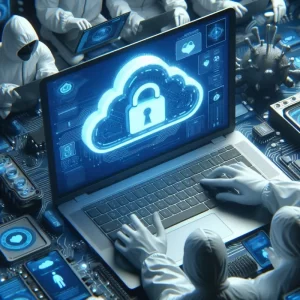Cryptojacking is a malicious activity that has become increasingly prevalent in recent years. It involves the hijacking of a computer’s processing power without the owner’s knowledge or consent. This unauthorized use of computational resources is exploited to mine cryptocurrency, a digital asset that can be traded for profit.
The process of cryptojacking typically begins with the installation of malicious software, often disguised as legitimate applications or updates. Once this malware is executed, it secretly utilizes the infected computer’s CPU or GPU to mine cryptocurrency. This intensive computational activity can significantly degrade the performance of the affected device, leading to slower speeds, increased fan noise, and shortened battery life.
Cryptojacking typically involves the following steps:
- Infection: Hackers infect your computer with malicious software, often through phishing emails, malicious websites, or compromised software.
- Mining: The malware uses your computer’s CPU or GPU to mine cryptocurrency, such as Bitcoin or Monero.
- Profit: The hackers collect the mined cryptocurrency and sell it for profit.
Signs of Cryptojacking
- Slower performance: Your computer may become sluggish or unresponsive.
- Increased fan noise: The fans may run at higher speeds to cool down the overworked components.
- Higher electricity bill: If your computer is mining cryptocurrency, it will consume more power.
- Suspicious processes: You may notice unfamiliar processes running in your task manager.
- Unusual network activity: Cryptojacking can generate a significant amount of network traffic. If you notice unusually high data usage or connections to unknown servers, it could be a sign of cryptojacking.
- Unexpected browser behavior: Some cryptojacking malware can modify your browser’s settings or display unwanted advertisements.
How to Protect Yourself
- Keep your software up-to-date. Install the latest security patches and updates for your operating system, web browser, and antivirus software.
- Use a reputable antivirus. A good antivirus solution can help detect and block malicious software.
- Be cautious of downloads. Only download files from trusted sources and avoid clicking on suspicious links or attachments.
- Use a firewall. A firewall can help protect your computer from unauthorized network access.
- Be mindful of browser extensions. Only install browser extensions from reputable developers and avoid those that request excessive permissions.
- Consider using a dedicated cryptocurrency mining blocker. There are several tools available that can help prevent cryptojacking.
- Be aware of your network traffic. Monitor your network traffic for unusual activity, such as excessive data usage or connections to unknown servers.
- Educate yourself and your family. Teach others about the dangers of cryptojacking and how to prevent it.
- Report suspicious activity. If you believe you are a victim of cryptojacking, report it to your local authorities and your internet service provider.
Remember: Cryptojacking is a growing threat. By understanding the signs and following these preventive measures, you can help safeguard your device.
Share this information with others to raise awareness.
Tips to protect yourself from cryptojacking:
- Use strong, unique passwords. Avoid using the same password for multiple accounts.
- Enable two-factor authentication (2FA) whenever possible. 2FA adds an extra layer of security by requiring a second form of verification, such as a code sent to your phone or email.
- Be wary of public Wi-Fi networks. Avoid using public Wi-Fi for sensitive activities, such as online banking or shopping. If you must use public Wi-Fi, use a virtual private network (VPN) to encrypt your traffic.
- Stay informed about the latest cybersecurity threats. Subscribe to reputable cybersecurity news sources and follow industry experts on social media.
By following these tips, you can help protect yourself from cryptojacking and other online threats.

